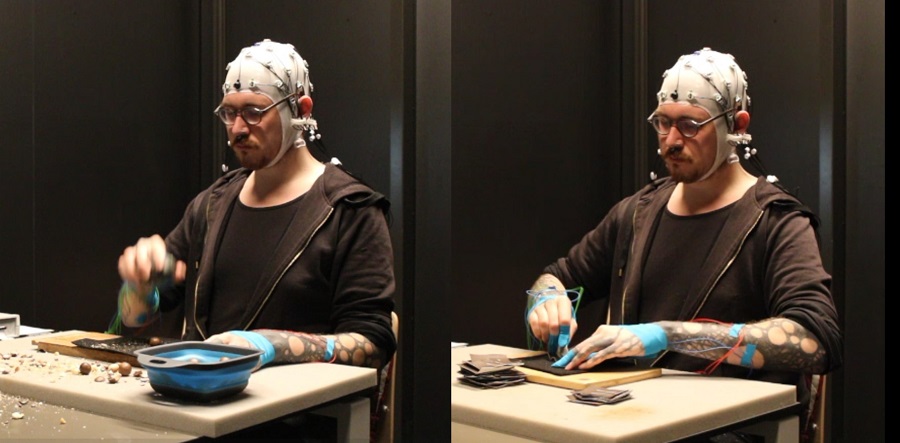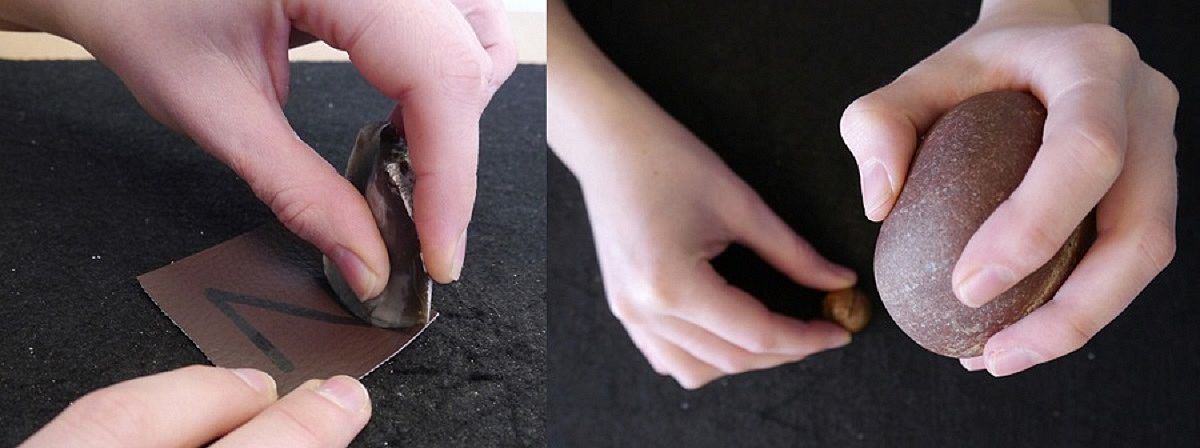Researchers led by Dr. Alexandros Karakostis from the Institute for Archaeological Science and the Senckenberg Centre for Human Evolution and Palaeoenvironment at the University of Tübingen suggest that changes in the brain could have enabled early humans to use tools with precision, thus setting in motion the biocultural evolution that led to today's humans. The team's experimental study took a new approach. The researchers recorded the brain waves of test subjects while they were using stone tools of the kind used by early humans. The results of the study have been published in the journal Scientific Reports.
"Technological innovations were crucial for human evolution," says Alexandros Karakostis. "We are interested in what cognitive developments were necessary for the use of relatively simple stone tools - and where humans and other primates differ in their abilities." In the experiment, the researchers investigated two different types of tool use. Firstly, the participants were asked to crack nuts using a stone as a hammer, and secondly, they were asked to cut patterns in leather using chipped stones. "We replicated stone tools to mirror those discovered in the early archaeological record," explains Simona Affinito, PhD student in Karakostis' research group and first author of the study. While nut-cracking with stones has also been observed in various animals such as monkeys and apes, the habitual use of chipped stones for cutting is only seen in humans.
Differing cognitive requirements
The activity patterns in the test subjects' brains were recorded in parallel in an electroencephalogram (EEG) as the subjects sought to complete the tasks. "Our study provides empirical evidence to support distinct patterns of brain activity during different behaviors and stages of early hominin tool use," explains Affinito. "The involvement of the frontoparietal regions, particularly during the aiming stage, highlights the importance of these brain areas in planning motor actions".
Although both tasks required cognitive effort, the use of cutting tools involved significantly more extensive brain activity than nut-cracking, Karakostis reports. "These differences implicitly highlight the cognitive performance required for precise tool-using tasks. They likely enabled early humans to appropriate and shape their environment in a way that was not possible before," he says. The new study has created the basis for further research into the cognitive prerequisites for human technological progress.
Publication:
Simona Affinito, Brienna Eteson, Lourdes Tamayo Cáceres, Elena Theresa Moos, Fotios Alexandros Karakostis: Exploring the cognitive underpinnings of early hominin stone tool use through an experimental EEG approach. Scientific Reports, https://doi.org/10.1038/s41598-024-77452-0








